17 Common Kitchen Cabinet Materials
Choosing your kitchen cabinets is one of the most important decisions you’ll make when designing your kitchen. Selecting a door style and color and the right door materials will directly impact your kitchen’s style and functionality.
We’ve compiled a list of the most common (and some less common) kitchen cabinet materials to help you decide which best suit your design, taste, budget, and lifestyle.
Wood Types of Cabinet Materials
Reclaimed Wood
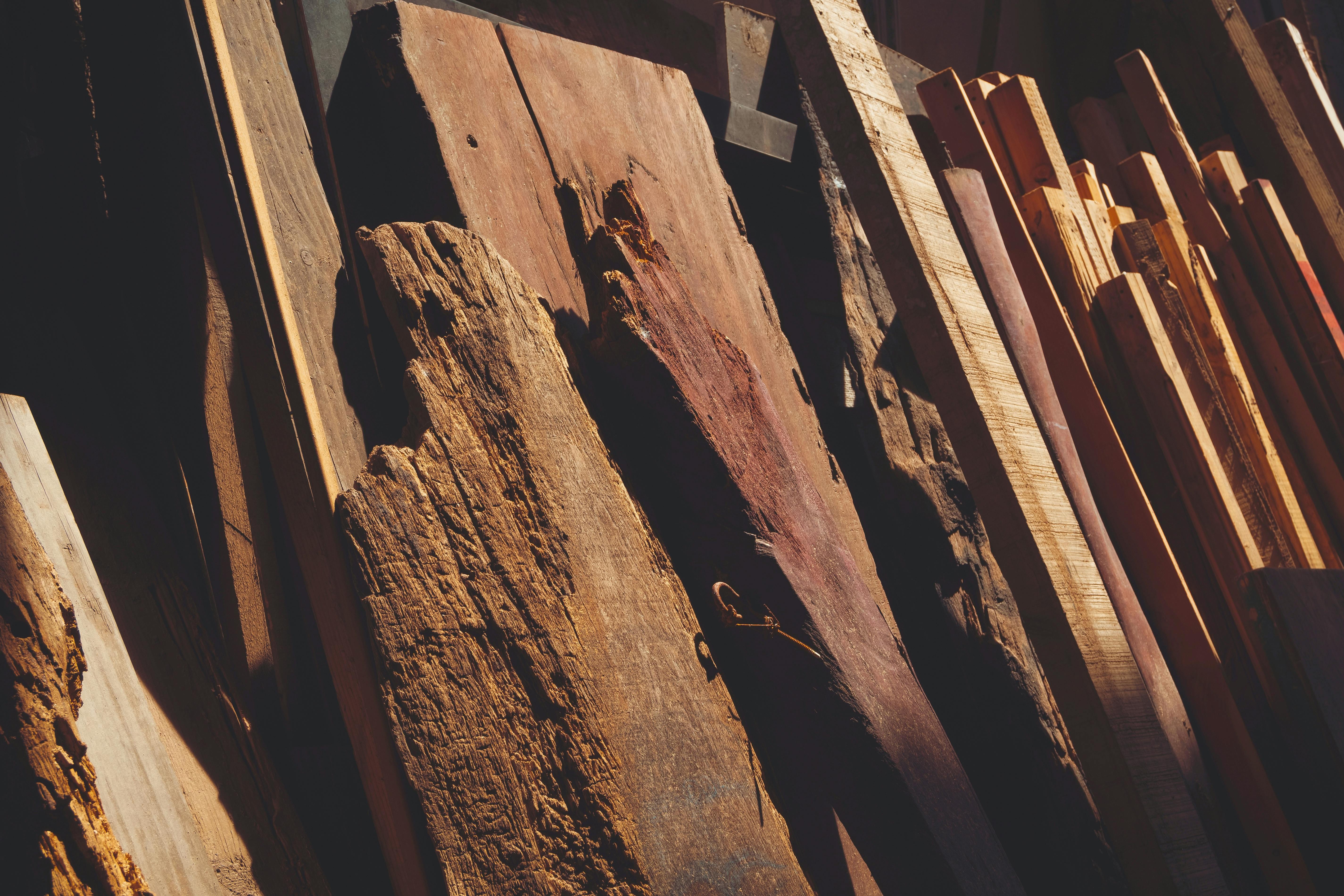
Reclaimed wood is salvaged from old structures like barns and buildings to be repurposed. It is prized for its unique character, natural aging, and rich patina. It is eco-friendly since it reduces the demand for new lumber and can be used in many ways, like with furniture, cabinets, and flooring.
Reclaimed wood is durable, although it may need some restoration depending on where it comes from.
Solid Wood
Solid wood cabinets offer natural beauty with various colors, grains, and finishes. Strong and long-lasting, solid wood cabinets provide a sustainable and timeless option. However, they are one of the most expensive options and require regular upkeep, including cleaning and polishing.
There are several types of popular solid wood cabinets:
Oak

Known for its uncompromising strength, oak is highly durable and a classic choice for cabinets. It’s available in two main types: red oak and white oak. Red oak has a more pronounced grain, while white oak has a subtler grain.
Birch
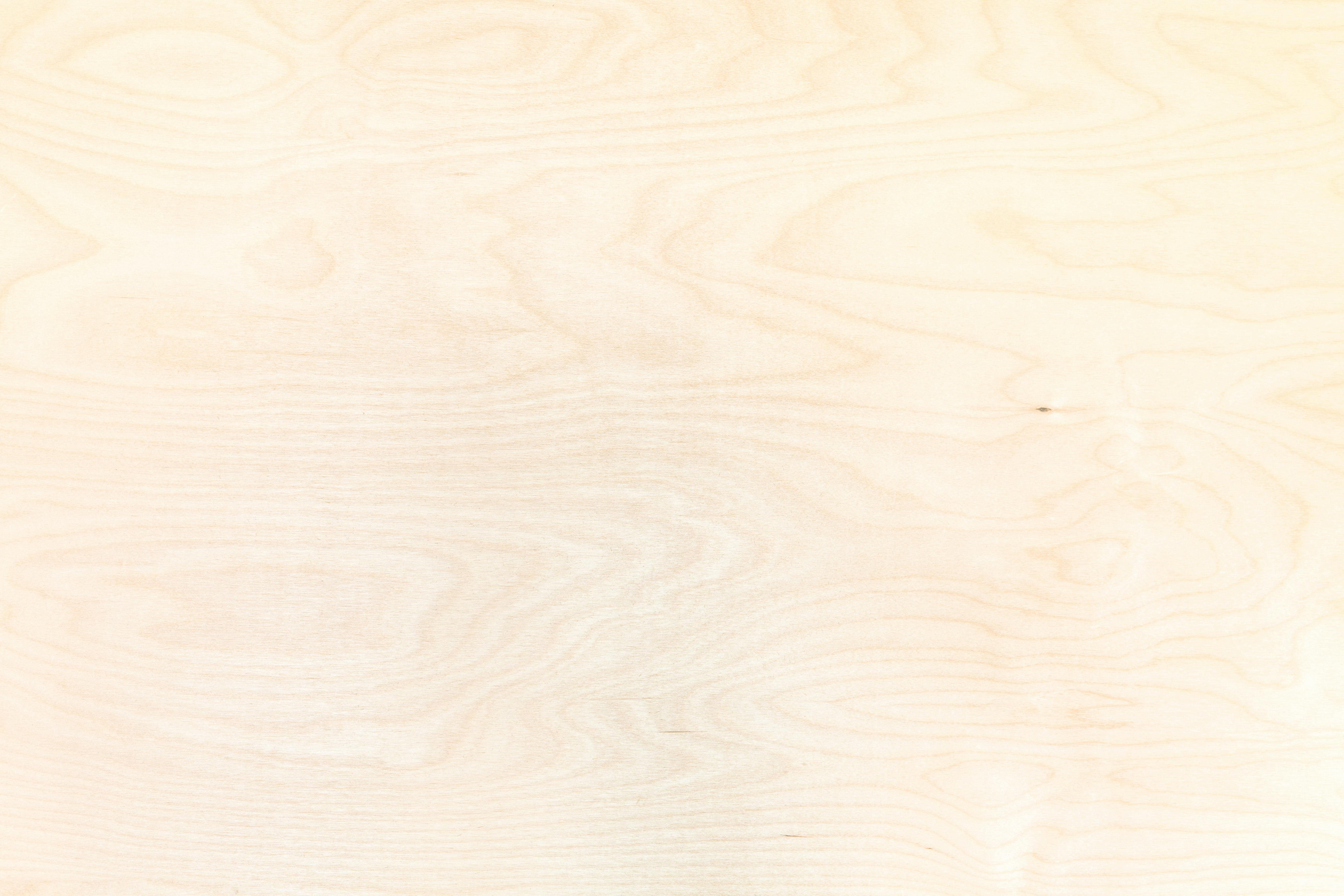
Birch is a relatively strong hardwood often used in cabinetry because it is well-suited to stains and versatile for different finishes.
Hickory
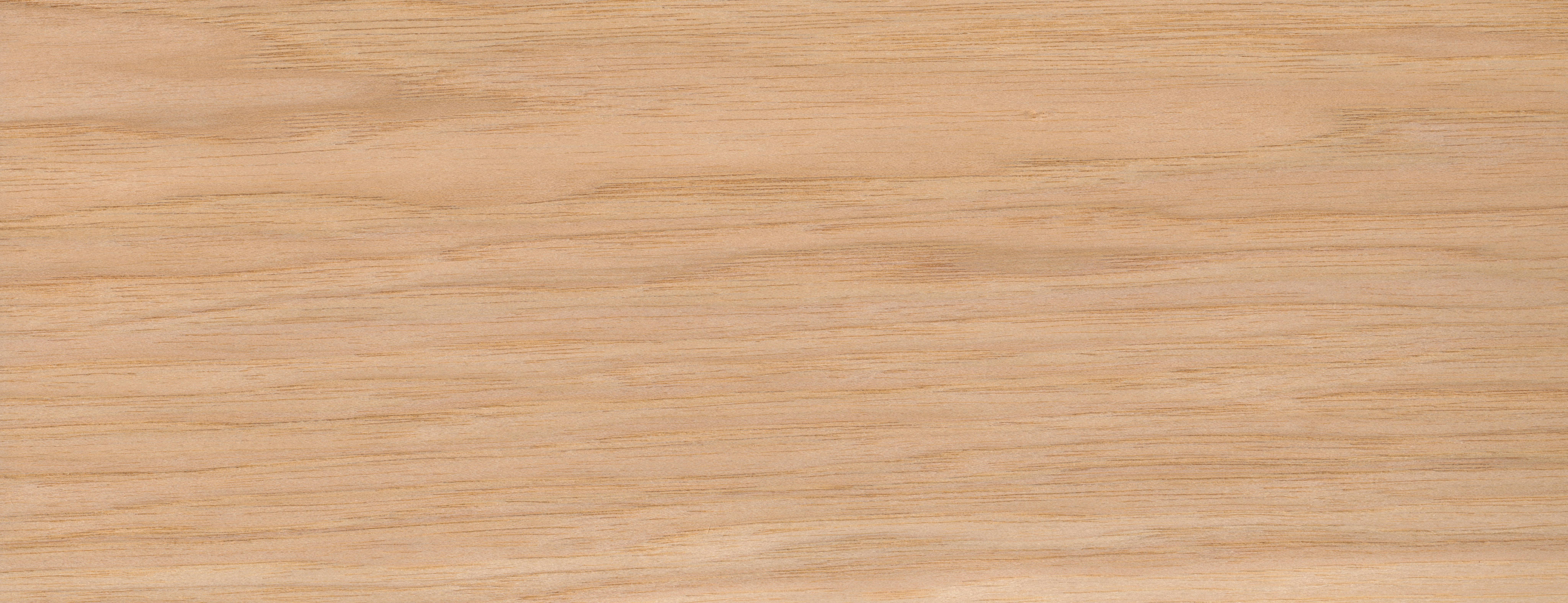
Hickory is one of the strongest woods available. Its bold, varied grain patterns give it a rustic appearance, making it a popular choice for traditional or country-style kitchens.
Plywood
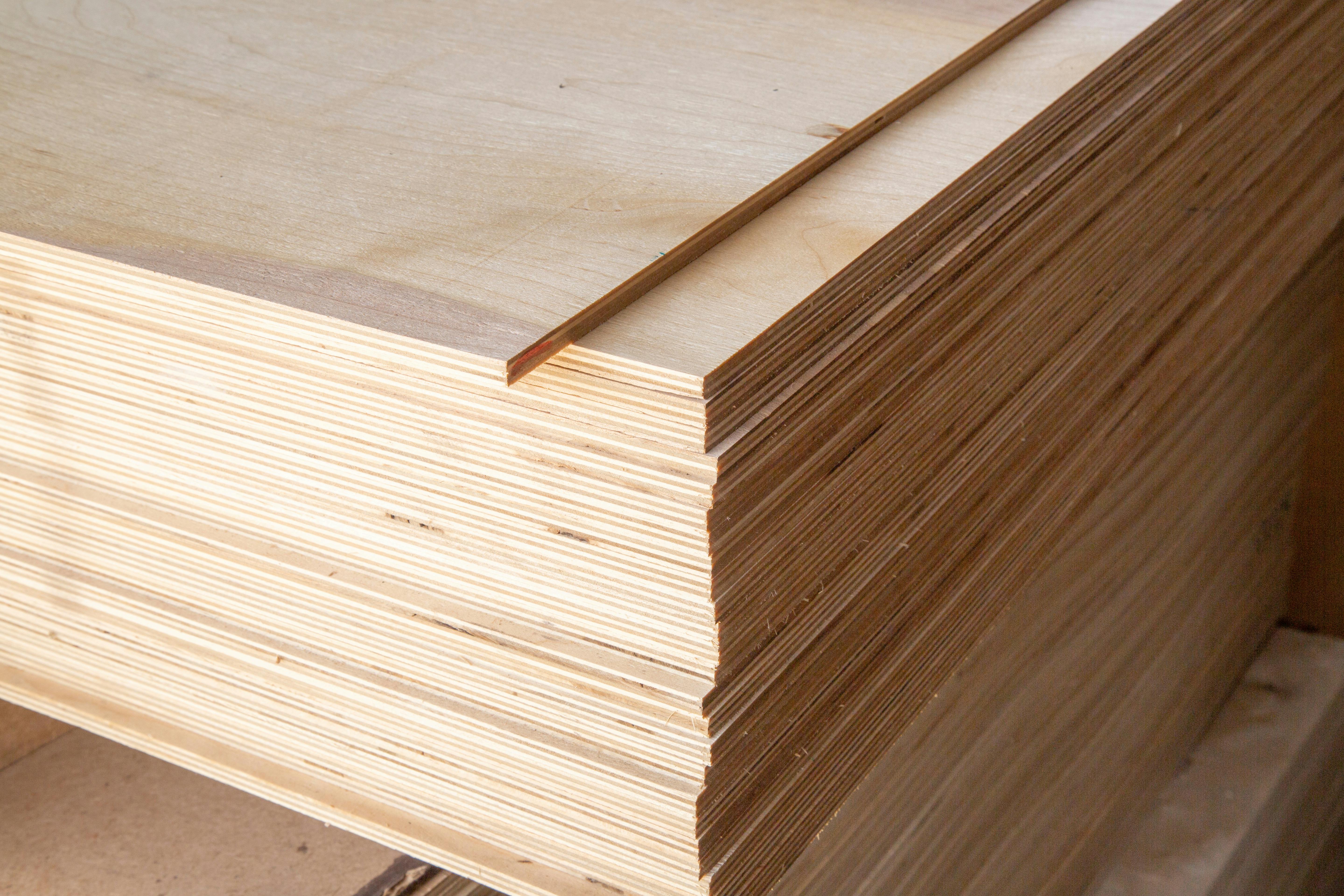
Plywood is less expensive than solid wood but still durable. It holds its shape well against humidity and is easy to repair. However, lower-grade plywood can warp, and its longevity doesn’t match that of solid wood.
MDF
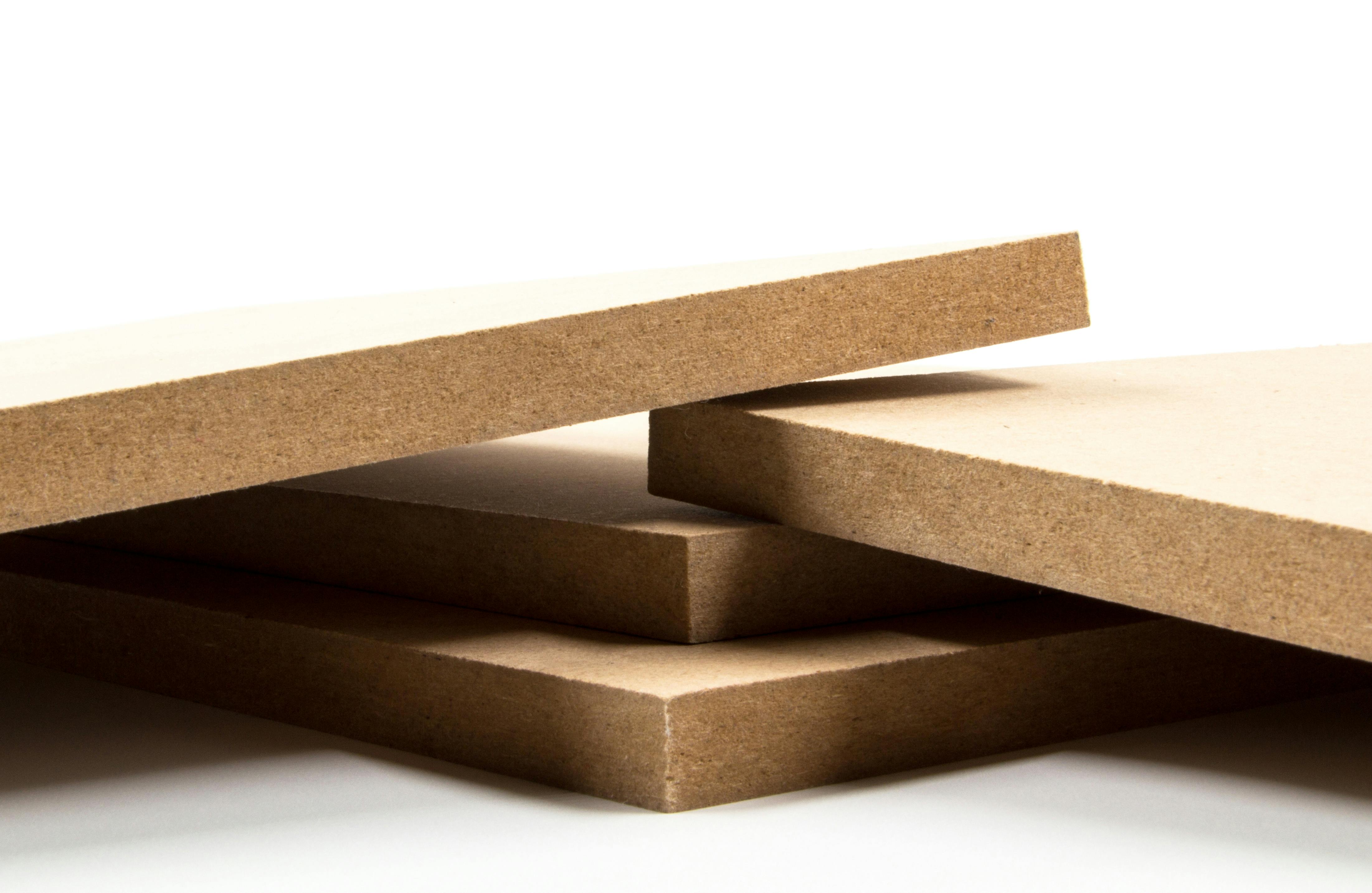
Medium-density fiberboard (MDF) is one of the most affordable engineered wood options. It is made from engineered wood, which breaks down wood fibers and bonds them with resin. MDF is available in large sizes, is highly durable, and is ideal for painting because it has a smooth finish. Fabuwood uses an MDF core and center panels in our cabinets to provide a cost-effective, long-lasting, durable option.
HDF
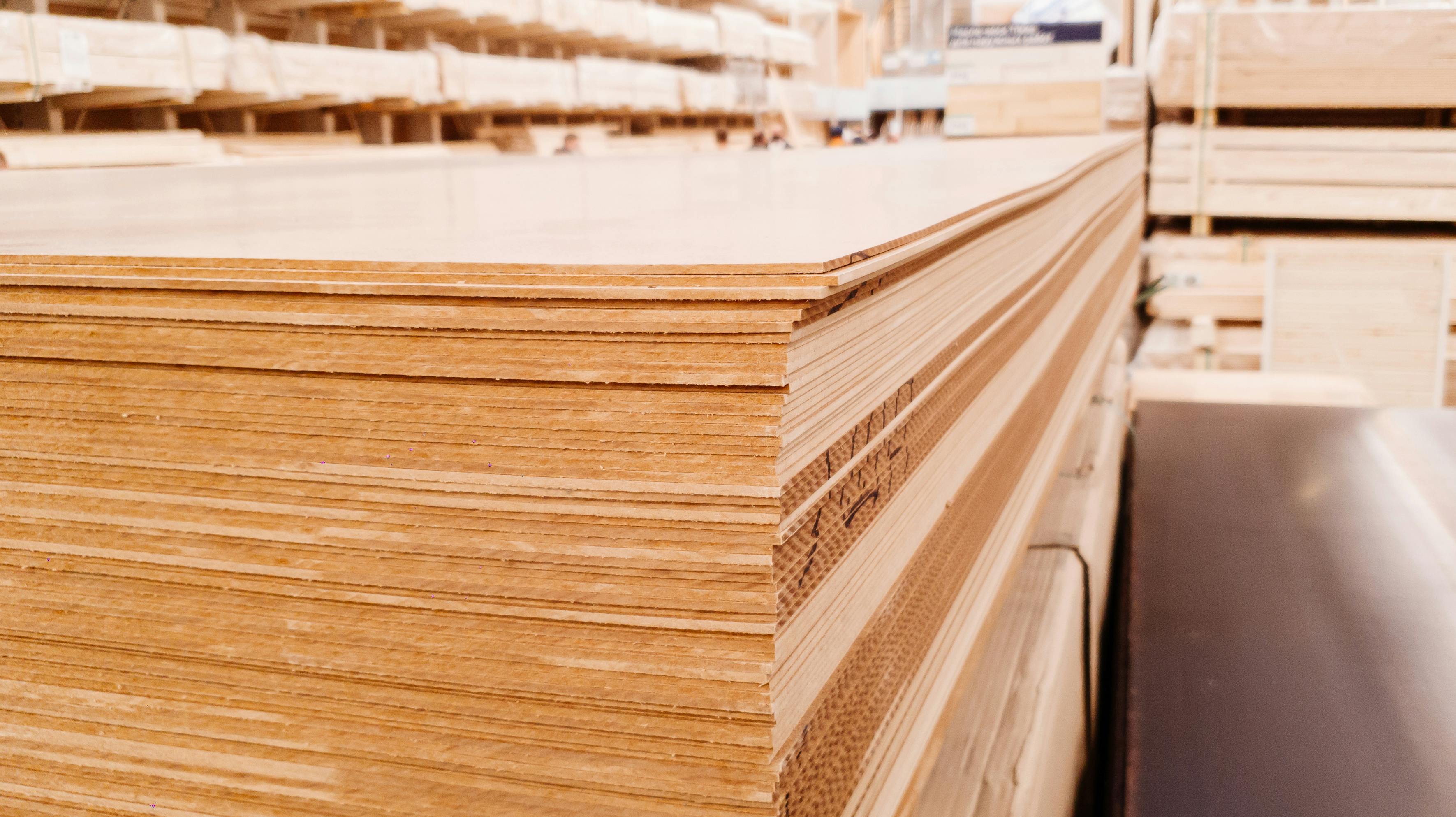
High-density fiberboard (HDF) is a denser, harder material than MDF. Fabuwood also uses HDF in our construction to provide a highly durable, long-lasting cabinet.
Bamboo
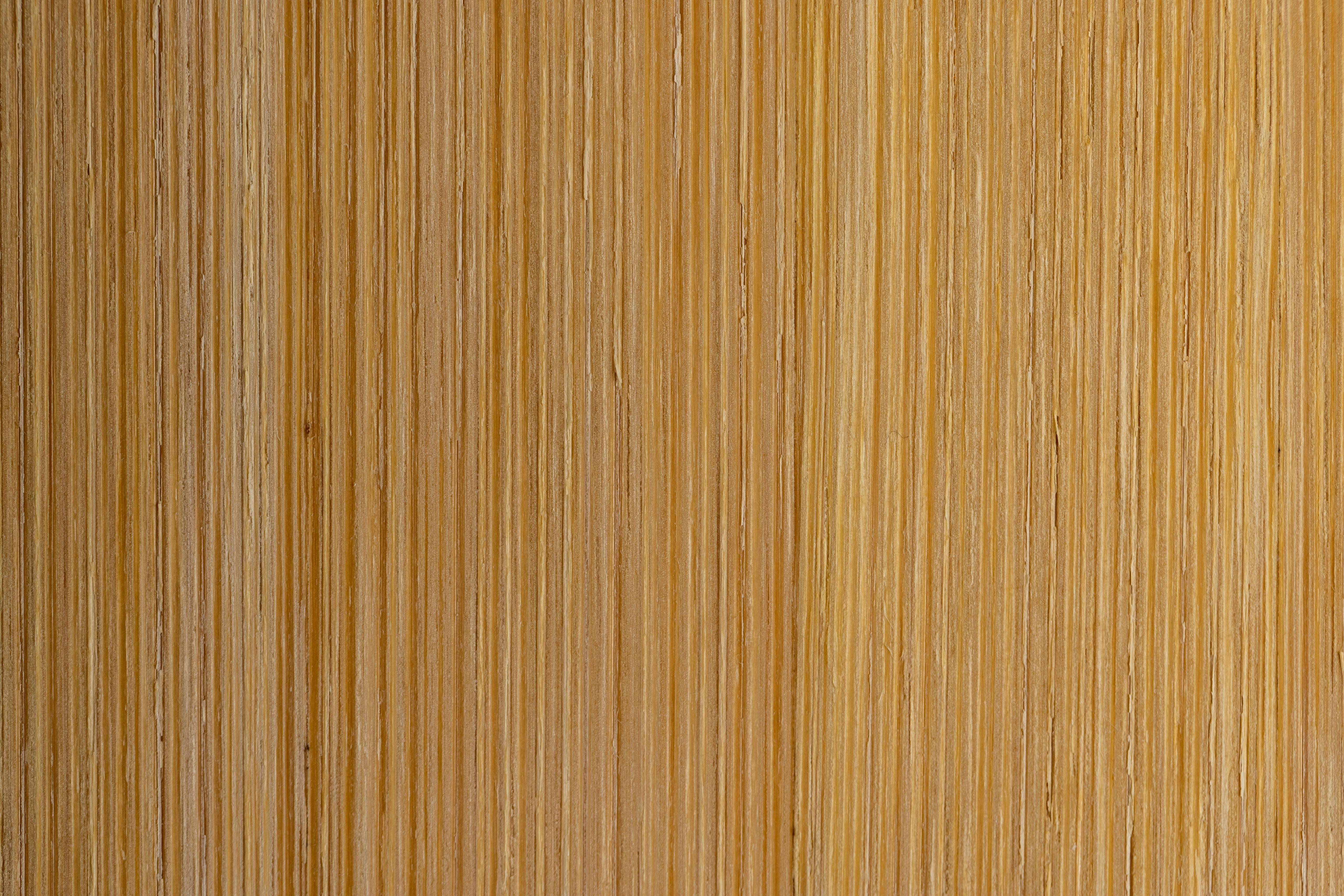
Bamboo is stronger than many hardwoods, including oak and maple. It is eco-friendly and offers a unique appearance. Due to the process of making bamboo plywood (involving cutting bamboo strips, boiling them, and gluing them together using high pressure and heat), this is one of the more expensive options.
Particle Board
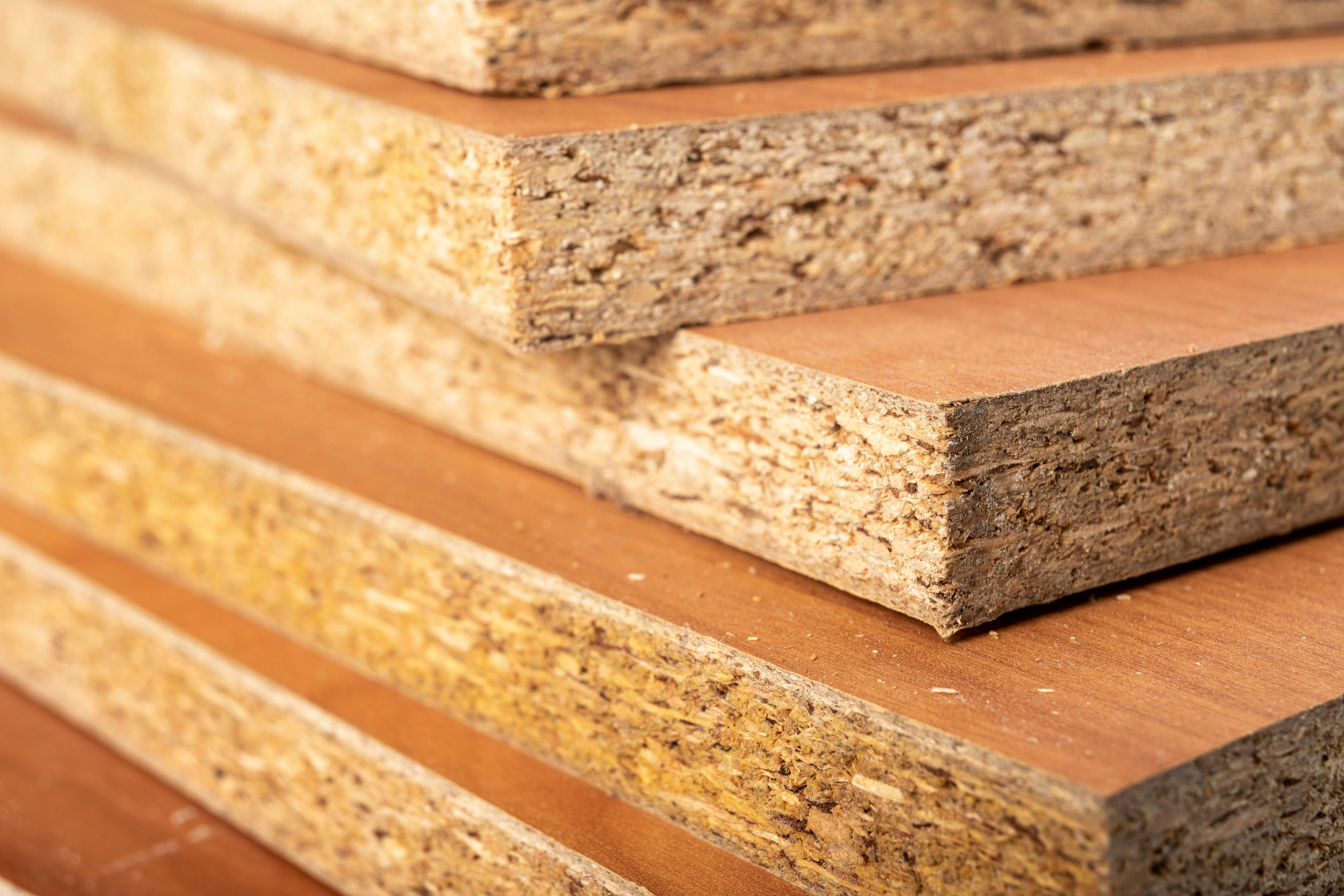
The least expensive cabinetry option is particle board made from wood byproducts. It is easy to work with and cut. However, it has low durability and can sag under heavy weight. It also absorbs water easily, leading to warping.
Wood Veneers
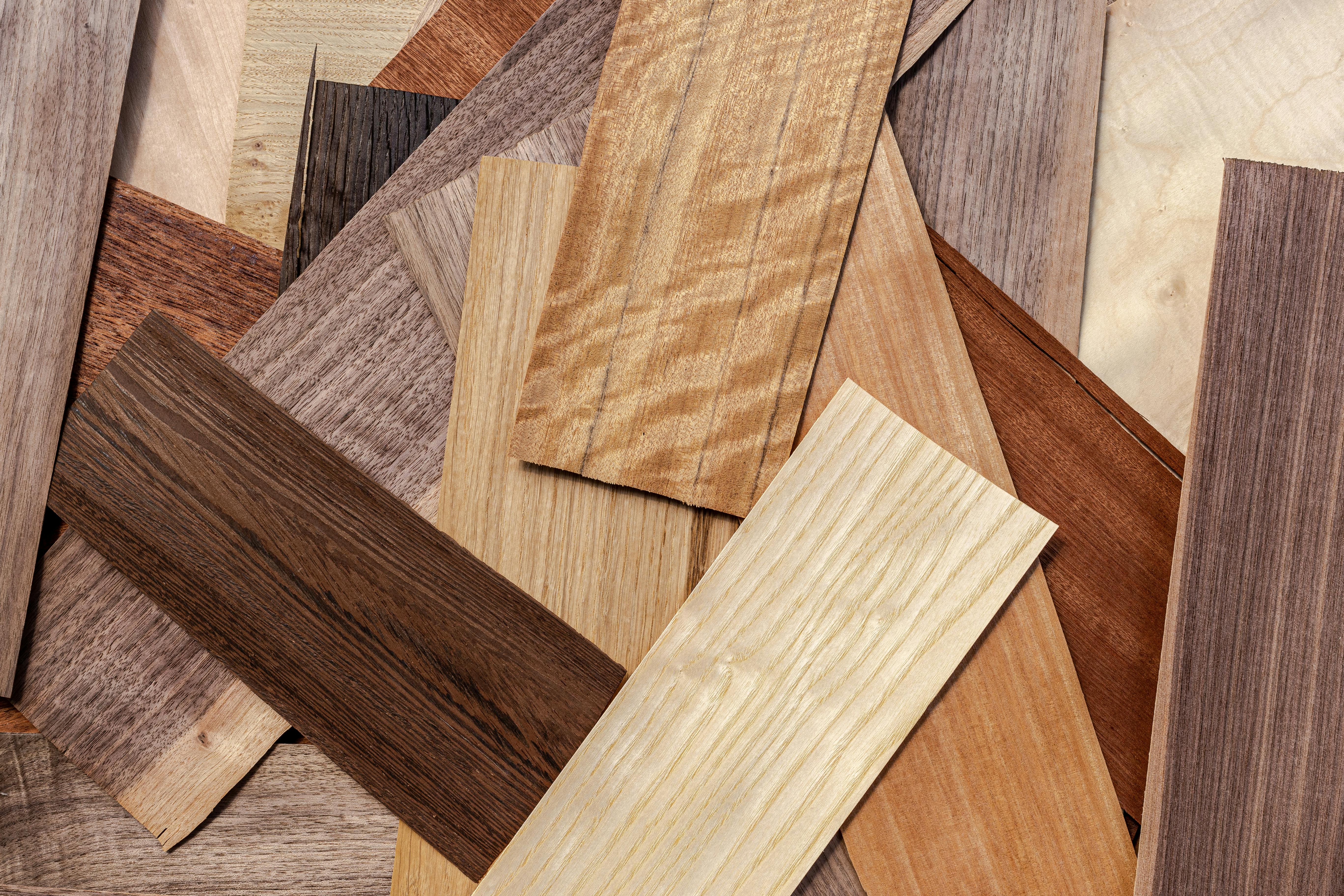
Wood veneers offer a wood-like appearance at a lower cost. They are made of thin slices of natural wood peeled or sliced from a block of wood. The slices are then bonded to plywood, particle board, or MDF to create the finished product. One downside is that excess moisture can cause the veneer to loosen and warp.
Synthetic Types of Cabinet Materials
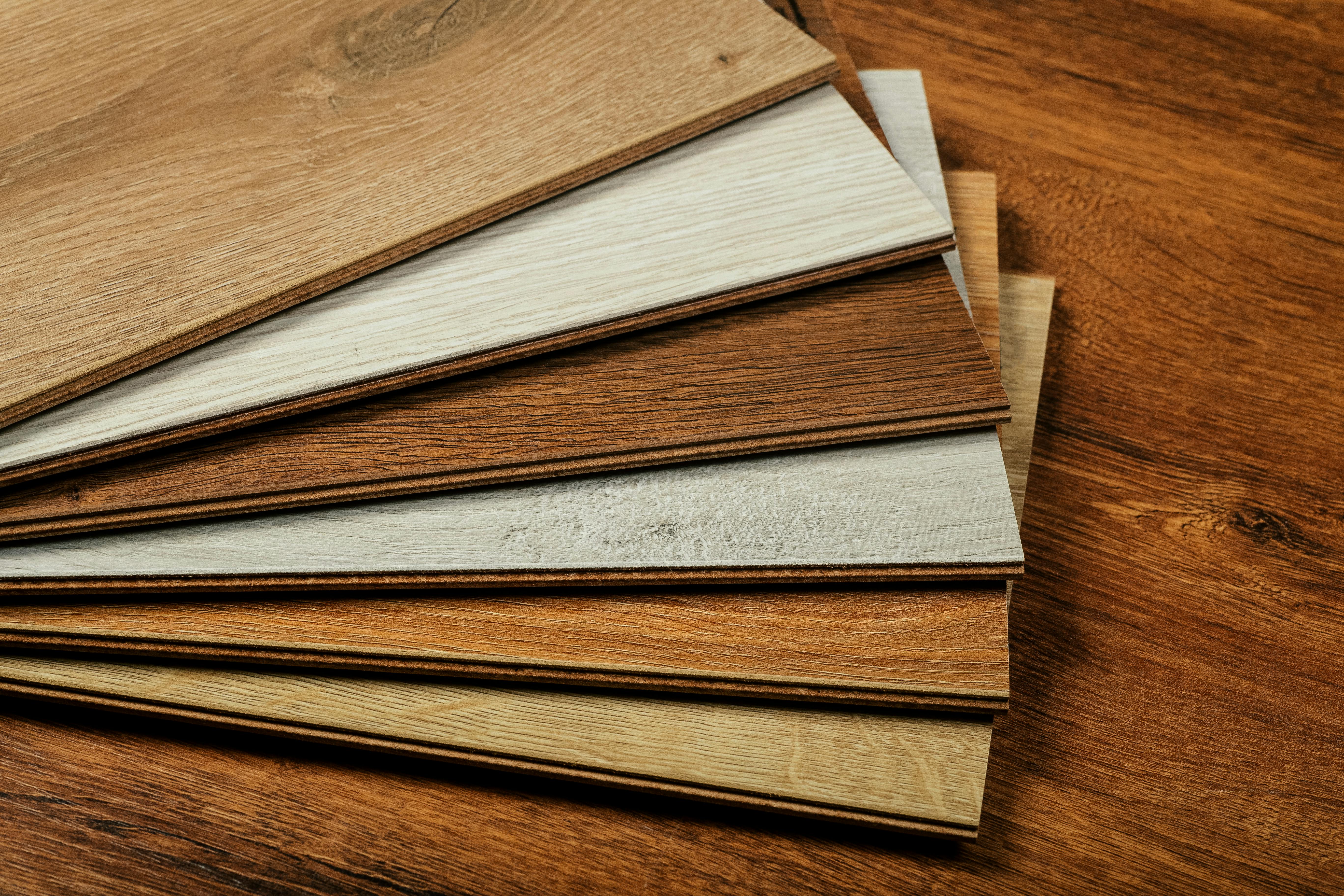
Acrylic
Acrylic is a cabinet material often used in modern or contemporary kitchen designs. It is a type of plastic known for its high gloss, durability, and vibrant color options. Acrylic is easy to clean, scratch resistant, and available in many colors. Acrylic is more expensive than laminate or melamine and shows smudges easily.
Melamine
Melamine is a versatile material made from resin, a type of plastic. It’s a cost-effective coating for particle board, MDF, or plywood. It is easy to maintain, cost-effective, and resistant to scratches, heat, and stains. It is heavier than other materials, which can lead to sagging.
Laminate
Laminate is a multi-layered synthetic material designed to mimic the appearance of more expensive materials like wood, stone, or metal. It is highly durable, offered in various designs and colors, and cost-effective. However, it is difficult to repair if chipped or cracked.
Thermofoil
Thermofoil is a synthetic vinyl or PVC material applied to another material, typically MDF. It provides a smooth finish, even around edges and details—perfect for a cabinet door with raised panels. It is highly durable, comes in various patterns and colors, and is one of the more affordable options. Thermofoil is sensitive to heat and can blister if exposed.
Surprising Types of Cabinet Materials
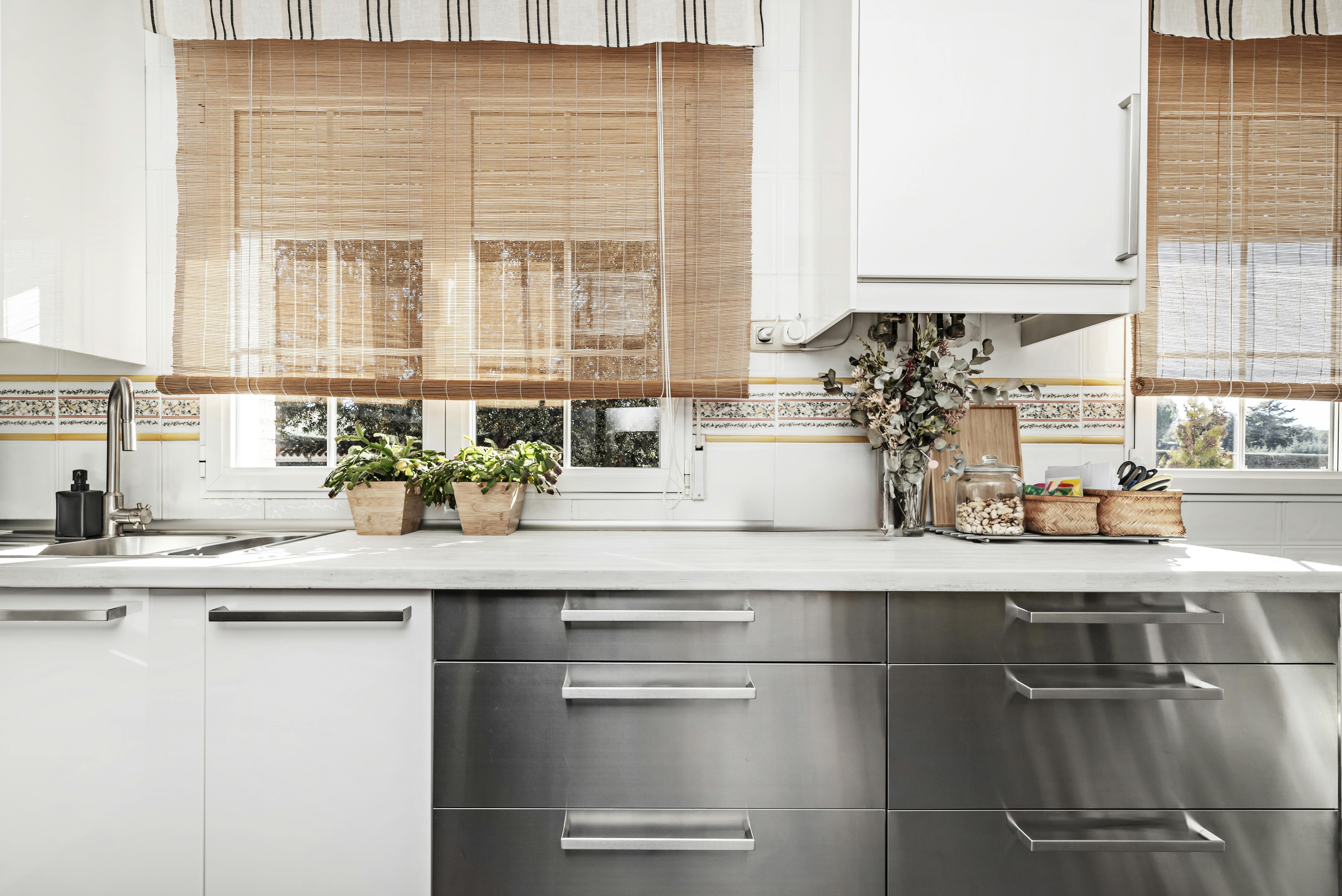
Stainless Steel
One of the most durable materials, stainless steel is extremely strong, heat resistant, and nonporous, making stainless steel cabinets the most hygienic. They don’t warp or stain and are easy to clean. However, they have a limited niche style, so they wouldn’t suit much more than commercial-style kitchens. They are also highly priced and show fingerprints very easily.
Paper Composite
Paper composite cabinets are made from sustainable materials like recycled paper or wood fibers combined with resin. They are surprisingly strong and durable and a great choice for environmentally conscious homeowners. They can also mimic the look of wood and stone and are available in various colors. Although paper composite cabinets are more expensive than laminates or traditional wood options, their longevity can justify the higher upfront cost.
Key Considerations When Choosing Cabinet Materials
- Budget- your budget directly impacts the style and material of your cabinets. Each material comes in a range of quality, so if you are set on one specific material, you may find cabinets within your budget.
- Customizations- decide if you want prefab cabinets or customized ones to fit your spatial and stylistic needs. This will also affect which materials you can choose from.
- Aesthetics vs. Functionality- balance your desired look with the material’s ability to withstand wear and tear, especially in busy homes.
As you weigh your options, consider how each material’s durability, maintenance needs, and visual appeal will fit your budget and lifestyle. If you aim to balance cost and quality, consider options like plywood, MDF, or wood veneers—they offer a great middle ground. However, solid wood or stainless steel cabinets could be worth the investment if you're focused on durability and long-term value.
Ultimately, the best choice is one that complements your kitchen’s design and meets your functional needs, ensuring your new space is both beautiful and built to last. Contact your local dealer to learn more about the different cabinet material options.
FAQS
What is the most common material for kitchen cabinets?
Solid wood and plywood are some of the most common materials, while MDF is popular for a more affordable option.
Which material is the most durable for kitchen cabinets?
Natural wood, such as maple, birch, and walnut, is the most durable kitchen cabinet material, but there are many other durable options for every budget.
What is a cost-effective material for kitchen cabinets?
Particle board is the most cost-effective kitchen cabinet option. It is made of waste wood and sawdust, making it inexpensive to produce. If you need something durable, go with other cabinet options like MDF or laminate.
